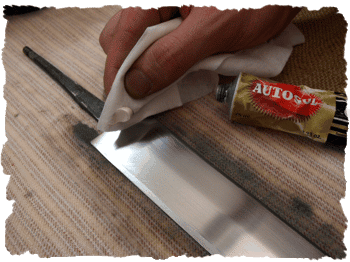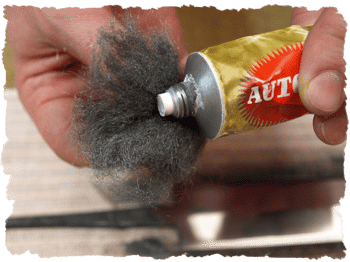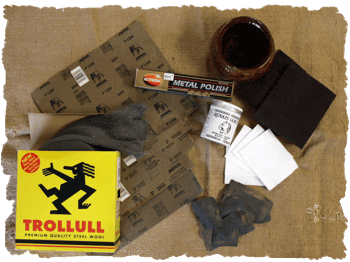Instructions for removing light rust
When it comes to swords, daggers and other carbon steel weapons, rust is much easier to prevent than it is to remove, but it’s just a fact of life that often oiling is forgotten and rust can set in. Even if rust has begun its work, it can be surprisingly easy to clean off. Getting rid of scratches and chips is an altogether more arduous a process. Scratches are created every time a blade hits an object, and obviously if the blade is mishandled. To remove scratches the blade needs to be sanded down and polished.
Depending on the amount of rust you can use polishing materials in varying degrees of roughness. Oxidation always begins on the surface and without treatment moves deeper over time. If you are dealing with new rust just on the surface, it can be removed with light polishing, but if old rust has penetrated deep into the blade it needs to be sanded down in its entirety.
Little spots that have only just appeared can be removed with just some oil and a rag. A piece of cloth can be sufficiently rough as a sanding material if the rust has just started and is on the surface. Use pressure and rub for a few seconds to see if this method is efficient or if you need to move on to sturdier materials.
Another light and easy method is using a polishing paste with a cloth/rag. Many brands are available and can be purchased from supermarkets and hardware-stores. Dab a small amount of the paste onto the blade, and rub it with the cloth until the rust has been removed. These pastes contain microscopic granules which grind away the rust and the surface of the blade, leaving behind a buffed surface. This method is not sufficient for the more serious rust patches, so often you need to move onto the harder stuff.

If polishing paste alone will not get rid of the rust, the next level up is 0000-sized or 000-sized steel wool. These finest steel wools are still fairly gentle and when used in conjunction with the paste they tend not to leave any visible marks.

For sanding and polishing there is a wide range of products available in varying degrees of coarseness, e.g. steel wools, sponges and papers. The rougher and coarser the product, the deeper grooves it produces and thus removes rust from deeper within the blade. These rougher sanding marks are always polished away using a slightly finer product, and the marks left by that with an even finer product. For example if you are using steel wool and start with a size 0 you would then cover its marks with a size 00, and then with 000 and so on. Using any line of polishing materials you are comfortable with, in this step-by-step manner, all but the worst cases of rust can be sanded and polished away.
Read more about sanding of the entire blade for more serious cases of rust or other damage. -Instructions: Sanding and polishing a blade-

